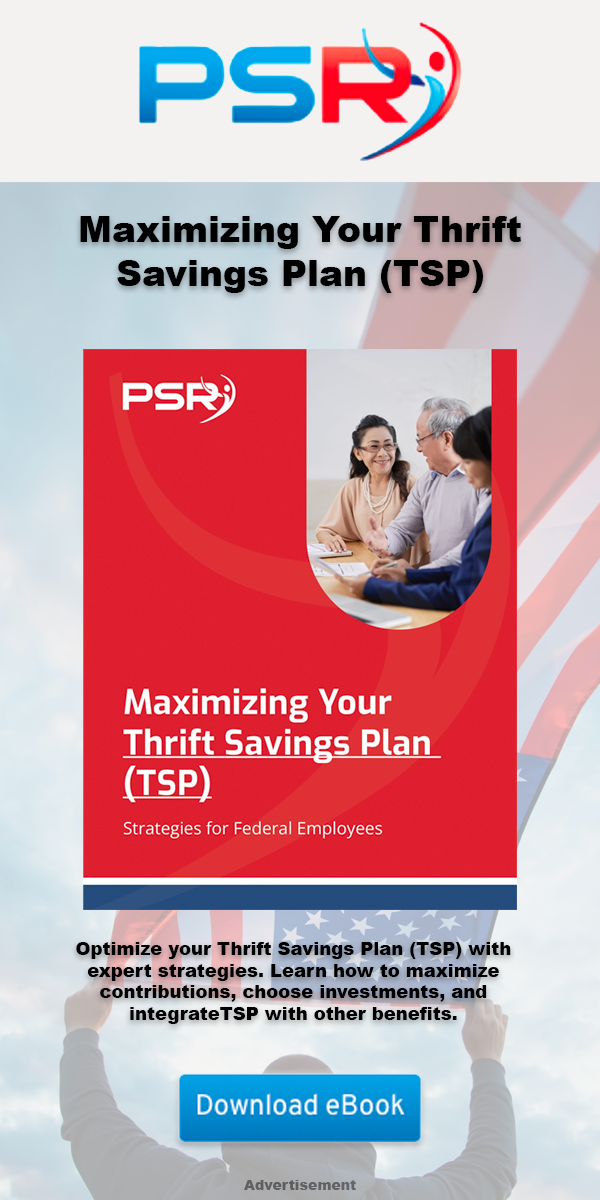Key Takeaways
- New contribution limits for 2024 allow federal employees to supercharge their TSP investments, creating more robust retirement savings.
- The latest fund performance updates and plan changes offer opportunities to diversify and protect your retirement portfolio in 2024.
Thrift Savings Plan Updates Federal Employees Need to Know for a Stronger Retirement Game in 2024
A strong retirement strategy is essential for federal employees, and the Thrift Savings Plan (TSP) remains one of the most powerful tools in your retirement arsenal. With 2024 bringing fresh updates to contribution limits, fund performances, and withdrawal rules
- Also Read: The Best FEHB Plans for 2025: Which One Fits Your Lifestyle and Budget the Best?
- Also Read: Special Retirement Options for FAA and LEO Employees: Are You Taking Advantage of What’s Available?
- Also Read: Federal Employee Benefits You Didn’t Know Could Give Your Wallet a Serious Boost in Retirement
Higher Contribution Limits for 2024
Federal employees continue to enjoy the benefits of tax-deferred growth and matching contributions with the TSP, and for 2024, the game gets even stronger. The IRS has increased the TSP contribution limit, allowing employees to contribute more toward their future financial security. The annual contribution limit for regular employees is now $23,000, up from last year’s limit of $22,500. For employees aged 50 or older, the catch-up contribution remains steady at $7,500, bringing the total potential contribution to $30,500 for those nearing retirement.
Maximizing contributions, especially for those in their peak earning years, is crucial to boosting retirement savings. Employees should adjust their payroll deductions early in the year to meet the higher limits and take full advantage of these updates.
SECURE 2.0 Act and Its Impact on TSP
The SECURE 2.0 Act, signed into law, has brought significant changes to retirement savings plans, including the TSP. One of the most important provisions in the SECURE 2.0 Act is the increase in the age for Required Minimum Distributions (RMDs). Previously, federal employees were required to start withdrawing from their TSP accounts at age 72, but the age has now increased to 73 as of 2024. For younger federal employees, this will eventually rise to 75 by 2033.
By delaying RMDs, retirees can allow their investments to grow tax-deferred for a longer period, potentially enhancing their nest egg. This update offers more flexibility and control over when and how much you withdraw from your TSP, making a big difference in your overall retirement strategy.
Fund Performance and Investment Strategies for 2024
Staying up to date on fund performance is critical for federal employees, especially in light of ongoing economic volatility. As of September 2024, the TSP’s C Fund has posted an impressive return of over 21% year-to-date. The C Fund, which tracks the S&P 500, continues to be a popular choice for those looking for growth opportunities in the stock market.
The G Fund, on the other hand, offers more stability and has returned around 3.26% year-to-date, making it an attractive option for employees nearing retirement or looking to preserve their capital. While the G Fund’s growth is modest, it guarantees no loss of principal, which is a key factor for risk-averse investors.
Employees should consider rebalancing their portfolios to reflect their current risk tolerance and retirement goals. For instance, younger employees may continue to lean toward growth-oriented funds like the C, S, and I Funds, while those nearing retirement may want to shift toward more conservative options like the G and F Funds. Diversifying your investments within the TSP can help reduce risk and take advantage of market gains.
New Rules on TSP Withdrawals
When it comes to withdrawing funds from the TSP, 2024 introduces some noteworthy updates. One significant change is the expanded flexibility for those planning partial withdrawals. Federal employees can now make multiple partial withdrawals throughout their retirement, allowing for greater control over their income stream. This added flexibility means retirees can adjust their withdrawals based on their financial needs without being forced into large lump-sum distributions.
Additionally, the “Installment Payment Option” gives retirees more ways to customize how they receive their retirement income. Employees can choose between monthly, quarterly, or annual payments and even modify these payment options over time, depending on their financial situation.
Planning your withdrawals carefully is essential to avoid outliving your savings and ensuring that your TSP continues to work for you throughout your retirement years.
Roth TSP Updates: A Stronger Option for High Earners
The Roth TSP continues to be a popular choice for federal employees who expect to be in a higher tax bracket during retirement. With the 2024 updates, the Roth TSP remains a powerful tax-planning tool. Contributions are made with after-tax dollars, which means qualified withdrawals in retirement are entirely tax-free—a significant advantage, especially if tax rates rise in the future.
For employees who want to leave a financial legacy, Roth TSP funds are also not subject to RMDs during the account holder’s lifetime. This makes the Roth TSP an excellent vehicle for estate planning and wealth transfer.
Importance of Reassessing Your TSP Strategy in 2024
With all the new changes in 2024, now is the perfect time for federal employees to reassess their TSP strategy. Reviewing your contributions, investment choices, and withdrawal plans can help ensure you’re making the most of the TSP’s benefits. Employees should also consider how other retirement accounts, such as IRAs or private investments, fit into their overall retirement strategy. By doing so, you can avoid costly mistakes and set yourself up for a more secure financial future.
Rising Healthcare Costs and How the TSP Can Help
Healthcare costs continue to rise, and retirees must plan accordingly. Many federal employees rely on the Federal Employees Health Benefits (FEHB) program, but out-of-pocket healthcare expenses can still take a toll on retirement savings. Utilizing your TSP to supplement healthcare costs is a practical approach. By carefully planning your withdrawals and maintaining a well-diversified portfolio, your TSP can help cover unexpected medical expenses without derailing your long-term retirement goals.
How to Stay Ahead with These Updates
Staying informed about the latest TSP updates is essential for maximizing your retirement savings. As 2024 progresses, federal employees should review their TSP accounts regularly, stay aware of fund performances, and adjust their strategies accordingly. Proactive planning and consistent contributions are key to ensuring that your TSP works as hard as you do, helping you build the retirement of your dreams.
Ready to Strengthen Your TSP in 2024?
The Thrift Savings Plan remains a cornerstone of federal retirement planning, and the updates in 2024 present new opportunities to strengthen your retirement strategy. Whether it’s increasing your contributions, adjusting your investments, or planning your withdrawals more strategically, now is the time to take action. By staying on top of these changes and reassessing your approach, you can secure a more robust retirement future.













